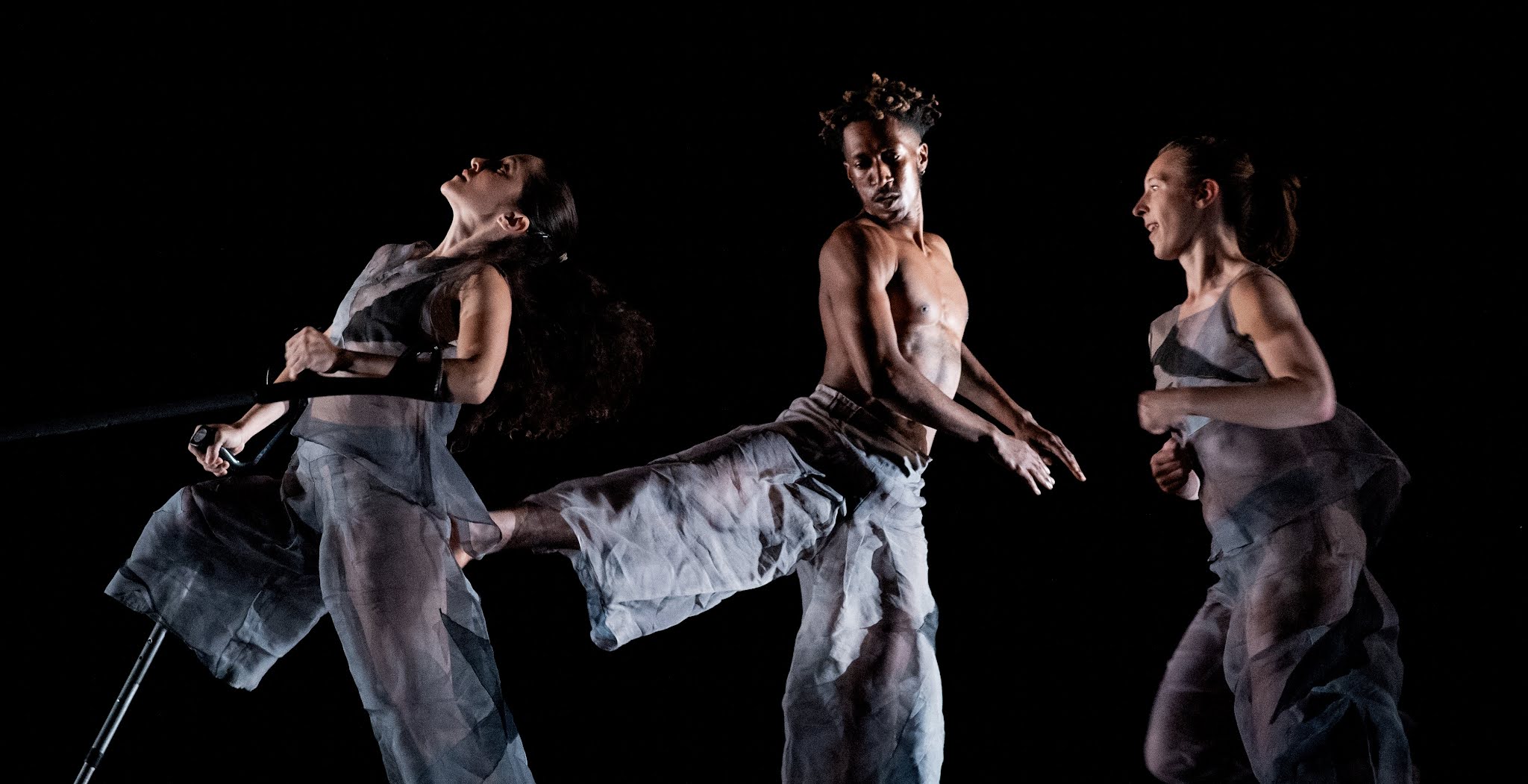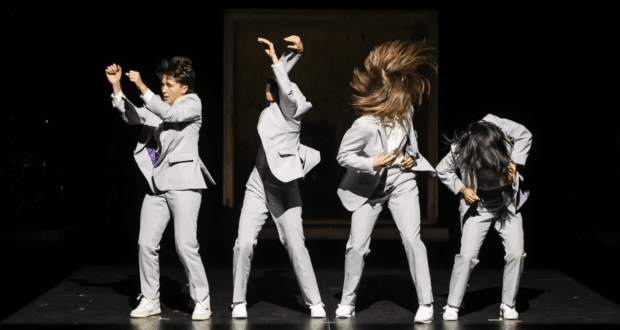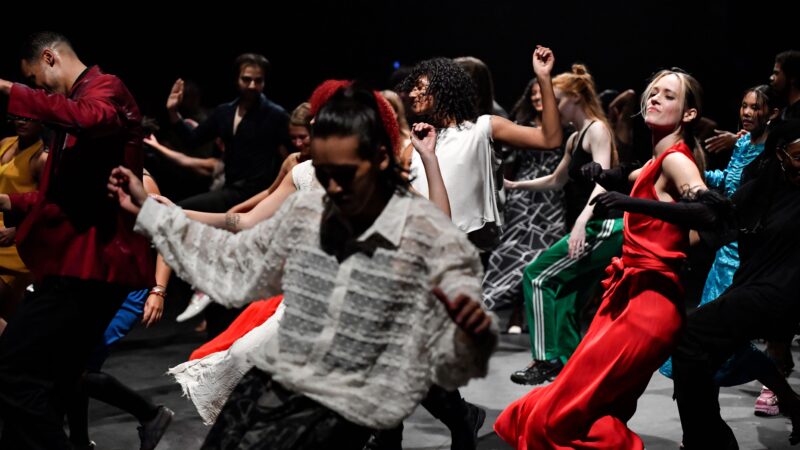Sadlers Wells
The Candoco Dance Company returns to Sadler’s Wells, staging two radically different pieces of work. Despite their wonderful ethos, thematic issues plague the evening in a variety of elusive shapes.
Formed in 1991, the company’s groundbreaking inception and collaboration with disabled and non-disabled dancers is an inspiration. In an industry still obsessed with classical ideas of beauty, and youth a reworking of this shallowness was/is much needed.
We launch into Set and Reset/Reset, a reworking of Trisha Brown Dance Company’s piece Set and Reset. The dancers frolic in light chiffon colours of pale greens and blues, looking like butterflies escaping their silken cocoons. Celeste Dandeker-Arnold’s beautiful creations are transparent enough to see the contorts of the dancer’s bodies writhing under the thin fabric. Laurie Anderson’s rhythmical robot audio underscores this piece, repeating the phrase “long time no see”.
Despite breathing fresh life into the famous work, and some lovely shared moments of choreography the piece has very little build. Repeated background audio and dawdling cello coupled with the random almost casual routines means there is little at stake. Dancers in wheelchairs and crutches swing and fly too and frow. Extensions of the performer’s figures, the metal frames add a fascinating visual language to the piece as a whole.
The second act is an almost antithesis to this. Jeanine Durning’s Last Shelter is a post-modern experience, filled with microphone-stream-of-conciseness-monologues and a feeling of improvisation. Under hospital-style strip lights, the dancers now in relaxed sweats move tables and chairs round in a piece as odd as it is surreal. With everyone getting a crack at the mic work some performers are more gifted than others, crafting their thoughts into off-beat poetry as opposed to mumbles of incoherent nonsense. As if an AA meeting suddenly erupted into dance the vicissitude of the everyday versus the preformative is interesting.
It’s the almost emotionless choreography of this piece that pickles the mind. The blank faces and robot dial-up background music flow into more emotive plonking on the piano. But the feeling never follows and the sarcastic self-referential sense is kept throughout. Enigmatic solo work keeps this piece feeling fresh especially from Ihsaan de Banya and Joel Brown.
Despite talented dancers, the pieces sit uncomfortably together. The first has a feeling of going nowhere, while the second goes everywhere at once. The sets and costumes are stripped back as you would expect but so is the emotion. What is left feels a little hallow, wrapped in silk layers but without a clear centre. Yet I commend the company for everything they stand for, and their important position in the dance world, even if this recent offering fails to dazzle.



